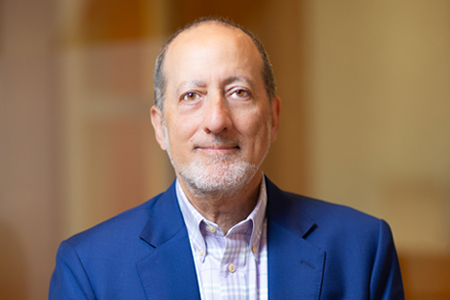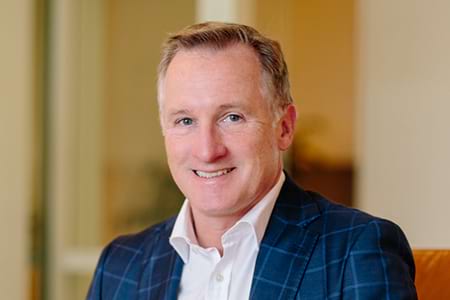January 14 Webinar Replay - Osterweis Strategic Income Fund Q4 Update
Published on January 23, 2025
If you were unable to join our quarterly webinar, watch the replay to hear updates on the Osterweis Strategic Income Fund.
Transcript
|
Shawn Eubanks: Good morning everyone and happy New Year. My name's Shawn Eubanks, and I'm the Director of Business Development at Osterweis Capital Management. We'd like to welcome you to our fourth quarter update for the Osterweis Strategic Income Fund. As usual, I'll be moderating a panel discussion with Carl Kaufman, Craig Manchuck, Brad Kane, and John Sheehan. Gentlemen, it's great to be with you today. Before we begin, I want to remind our listeners that last year the fund transitioned from quarterly to monthly income distributions. We think this will be helpful for investors who are using the fund for income. You can view the updated distribution schedule on our website. So Carl, as always, I'd like to direct the first question to you, and I'd like to pick up where we left off last time. Equity markets once again had a strong quarter. And the S&P 500 finished the year up 25%, but investment-grade bonds struggled again in 2024. Can you talk about the disconnect between the two markets, including any impact geopolitical events may have had on the divergent returns? |
|
Carl Kaufman: Morning, Shawn, and thank you everyone for dialing in. Happy New Year to everybody. You're correct, the two biggest financial markets have been behaving quite differently. Equity markets clearly are more optimistic about the outlook, and they seem to be focusing on Trump's pro-business policies and also holding out for continued Fed cuts. Bond markets, on the other hand, are far more concerned that inflation remains elevated, and that the more the Fed cuts are forthcoming, the more fuel it adds to that inflationary fire. But I think the fixed income markets have come to the realization that multiple Fed cuts probably won't be forthcoming. At the December meeting, the Fed did reduce their forecast to two cuts for 2025 from four, because inflation has been a little stickier than they expected. So we'll have to wait and see. Additionally, bond markets are worried that some of the incoming administration's policies could be inflationary, possibly causing the Fed to reverse course and become more restrictive. We'll have to wait and see on that. The issues there are clearly tariffs, and if you do execute on mass deportation of low-wage workers, both of those could be inflationary. Geopolitical instability looms in the background, and it's clearly an awful situation, but neither market seems to be too worried about that. Both China and Europe have structural economic issues. They are different. Europe just can't seem to light the wet wick of growth, and China has a real estate problem and a consumption problem that they are dealing with. And of course, armed conflicts continue around the world, particularly in the Middle East, Africa, Ukraine. I could go on, but why bother? It's awful. |
|
Shawn Eubanks: Thanks. I guess the obvious question is whether you agree with what the equity markets are telling us, or the bond market. |
|
Carl Kaufman: Well, a wise man once told me that it's probably best to agree with both. Forecasting is a tricky business. The New York Times, I don't know if you saw it, but recently published an article about year-end market forecasts going back to 2000. And what they showed was that the average prediction for gains in the stock market was 8.8% with no negative years seen for any year ahead. The average miss or variance from that was 14.2%. So we'll try to stay out of the forecasting business, but we do think history does serve as a useful guide to what markets might be predicting for future returns. Equity markets continue to rally. Valuations have not been this high since the dot-com bubble of 2000. And that seems to be an apt comparison as that era was driven by speculation in Internet startups, just as the current era is being propelled by the AI frenzy. If you could show the slide, I could go through some of this to show you what future returns might look like. As you can see from this slide, we started with 1999 and went forward five and ten years, and we started each year. So imagine you are an investor allocating to either the S&P 500, high yield investment grade corporates, or Treasuries, and we look at the returns for the following five and ten years. As you can see, 1999... And I don't know whether 2024 is the ultimate peak or not, the market could continue to rise. But from that peak, whenever it is, and I think probably getting closer, you can see that equity returns over the subsequent five years did not outperform high yield until the 2003 allocation period. So basically, you underperformed from 1999 to 2006. For 10-year periods, it's equally as bad. Clearly the two years when equities are going down, they're not going to beat fixed income. But 2001, 2002, 2003, 2004, and even 2005 to 2014, you barely beat high yield. So the point is that if you look at these returns for future returns, it does seem like equities may have a bit of a headwind. And high yield because of its higher coupons, higher credit ratings, lower volatility seems to be the go-to asset class. And as many of you know, we have been invested in credit, non-investment grade credit, for a while. We are doing a little bit more in investment grade on the short term right now. But I just think that's going to continue to be the place to be. |
|
Shawn Eubanks: Fascinating. It does seem like there are rising headwinds in equities for sure, but the economy is still quite healthy, right? So Craig, can you tell us a little bit more about that? |
|
Craig Manchuck : Sure. Thanks, Shawn. Good morning. The economy has remained strong throughout. We have seen periods where it's ebbed and flowed a little bit, but for the most part, in spite of the Fed's hiking, we continue to see a very strong market, a very strong economy. We've had a JOLTS report that came in last week. For anybody that is not familiar with that, that's job opening and labor turnover measures. And it can be perceived in different ways. Some people saw it as being a little bit softer because the rate of hiring is actually slowing a little bit, but the labor turnover is also slowing by an even greater degree. So ultimately it was a stronger, I think, than most people expected, result. And that caused interest rates to actually move higher. Feeling is that the Fed no longer will need to cut as aggressively as people had perceived that they would. So I think from the economy standpoint, we're in a good space. The consumer confidence is very high. We can see it on the chart here. It's highest it's been ever as we're looking back here over 25 years. So people are very comfortable, and when they do that, they spend. Now, what they're spending on is changing. We are seeing pockets of softness out there in the luxury goods area,. But generally speaking, people are quite confident in the forward look of the economy. Household wealth and retail stock investments are at an all-time high, and that measures into household wealth, which is also near an all-time high. So it's positive to have the wealth out there. It's a little bit disconcerting when we see too much of that wealth centered in equities, especially as we're a little bit concerned about performance going forward, and that could lead to some volatility in the household wealth measure in the future. So we're cautiously optimistic. But the economy, for at least the foreseeable future, looks like it's in reasonably good shape. And we continue to believe that as things go forward, things skew more positively here than negatively. |
|
Shawn Eubanks: Thanks, Craig. Brad, can you talk a little bit about how the Fed seems to be interpreting all these mixed signals? |
|
Brad Kane: Yeah, thanks Shawn. Well, as Carl mentioned originally, last year they had forecasted four rate cuts going forward, and then the most recent dot plots showed they only saw two cuts this year. So the adjustment, they're arguing a little bit, making an adjustment. After payrolls last week, we actually saw the market react and look at it as if there might only be one cut this year. And it's going to stymie the Fed a little bit if we continue to get strong economic numbers because it's possible you could see the markets start to argue no cuts this year. So if the economy continues to remain healthy, as it has been, there isn't a lot of reason for the Fed to lower rates, and that's what the bond market's been telling the Fed. In fact, since mid-September, 10-Year Treasury yields have risen almost 90 basis points. So really, instead of going from four cuts, what that market is telling you is four increases in that yield. And the 2-Year Treasury in the same time period has moved up 60 basis points of yield, from 360 to 420. So what you're seeing is the bond market is saying, "The economy is still strong and inflation is a risk, so keep rates high." And the Fed had been cutting, obviously, and cut their forecast. And now what we're starting to see is more Fed speakers coming out and saying, "Well, maybe we should slow the pace further." So I think they're trying to jawbone it and I think they're as flummoxed as what to do as the market is. |
|
Shawn Eubanks: Thanks, Brad. John, I know the team has been taking advantage of the inverted yield curve for a couple of years now. With yields rising on the long end, can you describe the new shape of the curve and explain about what it means? And also tell us how your positioning, given the long rates are now finally higher than short rates? |
|
John Sheehan: Sure, absolutely. Thank you, Shawn. Yeah, so after the Fed reduced fed funds rate by 100 basis points, and as Brad said, the long end increased by 100 basis points, the curve shape is now normalized, where it's positively sloped from two years out through 30 years. On a historical basis, it's still relatively flat, but it is positively sloped across the majority of the curve. In terms of how we're positioning in response to that, the adage that we are taking what the market gives us still applies. So as Carl said, we're still focusing on the front end of the curve. We're only extending out in duration and in credit where we feel the risk is being properly compensated for. We are at the time of the year where we start to see more of our companies look for refinancings, so I think that that's probably an area that we'll also be active in, is refinancing with existing portfolio companies. But I'd say no material change in terms of our focus and managing that risk, reward dynamic. |
|
Shawn Eubanks: Thanks. Craig, can you talk a little bit about what's been happening in the new issuance market? |
|
Craig Manchuck : Yeah. New issue activity is actually starting to pick up here this week. 2024 was a pretty strong year. 325 million was the total issuance amount for the year, which was up significantly from 2023. Saw a little bit of a slowdown in the fourth quarter. That was to be expected after a pretty busy year. And what we're seeing now is post the election, the people and business heads seem to think that the FTC is obviously going to be more agreeable here. So M&A activity, which has been on ice for the last couple years really, is starting to pick back up. And as that happens, I think there will be more issuance going forward. So most of the big banks on Wall Street are forecasting a similar year to last year. As Carl mentioned before, forecasting is a pretty inexact science, so that number could come in anywhere from 200 to 500 billion, we don't know. But all signs, at least from what we're seeing, point to a pretty solid issuance year. Pricing remains to be seen, but obviously we've got an elevated level of absolute rates here, so we still expect to see a lot of opportunities for us to be able to put money to work at attractive rates out there this year. |
|
Shawn Eubanks: That sounds like a real good setup. Brad, during our last call you talked about some signs of distress that you were seeing in the market, particularly an uptick in liability management events, or LMEs. Is there anything worth discussing this quarter or have things settled down a bit? |
|
Brad Kane: I would say the trend of higher defaults is continuing from 2023. LMEs are still a major percentage of those. And in fact, according to the Financial Times, the number of U.S. corporate bankruptcies hit the highest level since the Great Financial Crisis. So we saw 686 corporate filings, and that's every size company out there. It could be a small corporation to large corporations. And that was the highest number since 2010. But out-of-court restructuring LMEs, they're probably outnumbering actual, true bankruptcies by a margin of 2:1. So we're still seeing it, LMEs, and especially in the loan world has really picked up. In fact, loan distressed exchanges were up 150% from 2023. So they're continuing to kick the can down the road. And in there, 35% were repeat offenders, meaning they've done the can kicking, the exchange once, and they had to do it again. As you pointed out, last call I did talk about a pretty large private credit deal that had to restructure. We recently, in the last two weeks, just saw another one that had to restructure after two years of being in the market. So they're continuing and we're seeing them, but the one thing I would caution is I don't want to sound too, too negative overall because the high yield default rate right now is still only about 1.5%. In loans, it's higher, it's about 4.5%. So it's not the end of the world if you're buying an average, but it really does... It's a lot worse if you happen to be in more than one of those deals. And again, as we've always said, it really comes back down to doing credit research, understanding the businesses you're lending to, protections you have, and the incentives of management. And fortunately for us, we haven't been involved in any of those. |
|
Shawn Eubanks: That's great. Thanks for that. Carl, my last question is for you. Trump's inauguration is less than a week away. Do you have any thoughts on about how his administration may impact the economy? |
|
Carl Kaufman: Not much beyond animal spirits. Economies tend to mostly react to supply/demand dynamics, not Washington theatrics. I think tax policy can alter the trajectory a bit. But always bet with the business leaders with a profit motive to outsmart the bureaucrats in DC. We've already talked about what the markets are expecting, rightly or wrongly. We do think that tariffs are likely to be less disruptive and inflationary than some of the more dire forecasts have predicted, and we're already seeing some of that with the news headlines that they may be phased in over time. We are cautiously optimistic that the focus on reducing regulatory overhead will be stimulative to the economy. And so, carry on. |
|
Shawn Eubanks: Thanks, Carl. Any final thoughts before we open up to Q&A? |
|
Carl Kaufman: Not really. The markets in 2024 were pretty boring, and they continued that way. And we believe there's enough yield to make it worthwhile, which is good. As always, we continue, as John reiterated, to take what the market is giving us and do our best not to stretch. And with that, I guess we can open it up. |
|
Shawn Eubanks: Okay. Before we open the floor to Q&A, here's a fund performance slide, and we'll also follow up with some key portfolio statistics for the Strategic Income Fund. Okay, thank you. We'll now begin the Q&A. Okay, I have a question here. Are tariffs necessarily inflationary? |
|
Carl Kaufman: I'll take that one. They aren't necessarily inflationary, but they could hurt margins. Give you an example, a company importing something from China at $2 a unit, selling them for $15 to $20 a unit retail. 10% tariff raises its cost a little bit because it's on the landed cost, not on the retail price. So it's not a one-for-one passthrough. A 10% tariff doesn't mean that you have a 10% increase in the price of that good, so it doesn't necessarily need to be inflationary. And as typical, last time tariffs were imposed, businesses found ways around it by relocating manufacturing to areas that don't have tariffs. They'll figure it out. And also, the currency move in China recently has pretty much equaled a 10% tariff across the board, so that's something to keep in the back of your head. |
|
Shawn Eubanks: Okay. I have a question here. The team has been rightly betting on shorter term debt. But now, with the short end yields down a bit and the long ends up recently, are you finding duration more attractive? |
|
Carl Kaufman: We have increased duration very slightly. The reason is we have moved out from... I mean, we're still buying commercial paper, which is very short, one to two months. We're buying a lot more of six- to 18-month paper now because the yields there are higher. And we're buying not only high yield but also investment grade companies there because the yields seem to be about the same. But we're not quite ready to throw in the towel and buy a 10-Year paper yet. |
|
Craig Manchuck : Can I just add to that? The one thing that we have to be concerned about, in addition to interest rate duration, is spread duration. And as a result, spreads are fairly tight. And we don't want to be extending duration into a spread widening event because any widening event would have the same impact as an increase in rates would, and it would really negatively impact the principal value of any longer duration high yield debt. So we're being very careful. As we always are, we're making our security selections one at a time. And when we feel we're getting paid an appropriate rate, we are okay extending out for five-to-seven-year maturities. But the general part of the market out in that range is a little bit too tight for us. We have certainly seen things come in. We've got a few different names we've seen compress, maybe come back in three to five points off their highs in the last couple of weeks. So we're watching and waiting, and some of them are getting very close, but we're not making a wholesale duration extension bet at this point. |
|
Brad Kane: I would just also add that what you're still seeing in longer yields is you're not giving up that much in the shorter end of the curve. In fact, there was a deal that came yesterday into eight-year maturity with a 7% coupon. If I can buy 6% for two years, I would take that two-year paper and then wait and see what the market's going to do over the next year or two. So it really depends on if you're extending out, you need to get paid for extending out. |
|
Shawn Eubanks: Yeah. This is an interesting question. Has high yield equity beta gotten lower? Is the high yield bond market as correlated, I guess, to equities as it has been traditionally? |
|
Carl Kaufman: Really good question. I haven't looked at it on the short term. It feels like it isn't as correlated. And that's just anecdotal, when you see stock markets down 1% or up 1%. The high yield market doesn't tend to move around as much. Call it more skeptical on the way down; they need to see a couple, three days before they start weakening. And even when they do, they don't weaken a whole lot. So it used to be a pretty high correlation. I think that when I first started the fund 20 years ago, I think that had more to do with the quality of the high yield market, it was much lower quality back then. Double Bs were probably mid-30% of the market, now they're over half of the market. So you had much more equity-like risk embedded in the market. I think today, that is much lower. |
|
Carl Kaufman: Triple Cs for sure. |
|
Craig Manchuck : Yeah. |
|
Shawn Eubanks: Can you talk a little bit about credit spreads? They appear narrow today by historical standards. Any concerns that they can expand in 2025? |
|
Carl Kaufman: Well, they are narrow. And they are narrow with rates rising, which is generally what should happen because when rates are rising, that typically means you have a healthy outlook for the economy. So that is driving business activity, inflation higher. So rates have gone up. High yield hasn't really rallied as much as it should, but it has rallied a little bit, and that has caused spreads to come in. Now, spreads widen for two reasons. One is, typically, what happens is the markets sense that there is a credit event. And they demand more compensation, so credit spreads widen out. The other is that you get an economic event. And the base rate, which is Treasuries, that they base that spread off of, start coming down because they're aggressive cost-cutting. And high yield either stays the same or moves up in price or down in price, which means that yields go the opposite way. So yields going down in Treasuries, up in high yield, causes spreads to widen. We haven't seen either of those yet. The Fed tried to cut rates, but equities and high yield kept rallying, so spreads tightened. |
|
Shawn Eubanks: Okay. Can you talk a little bit about the percentage of the portfolio that you have in cash or cash-like substitutes, short-term bonds? |
|
Carl Kaufman: So you can see that our cash and equivalents, that is basically cash and commercial paper, was 15% at year-end. Investment grade was 12.7. Most of that, I'd say probably 80% of that, is under one year of maturity, and so the total is about 28% there. But we also had some non-investment grade under one year. So I'd say or bonds maturing under one year were about 35% of the portfolio at year-end. |
|
Shawn Eubanks: That provides a lot of dry powder if we do get- |
|
Carl Kaufman: It sure does. |
|
Shawn Eubanks: ... correction in the market. |
|
Shawn Eubanks: I think I know the answer to this one too, but do you have a call for the 10 year this year? 10 year- |
|
Carl Kaufman: Yes, it's going to fluctuate. It's interesting because as recently as mid-December, mid to late, we were seeing some Wall Street firms go through their annual process. And one of them was very vocal about predicting a 460 10-Year by the end of '25. Well, we're already above that. So I think the 10-Year could be, depending on how the economic landscape materializes, could be at four, could be a five and a quarter. I'll stick with that range. Probably not very helpful. |
|
Shawn Eubanks: Yeah. This is a related question. What are your thoughts on longer-term bond yields have risen in the developed markets? And where are we going from here? |
|
Carl Kaufman: Yeah, pretty much the same answer for developed markets. Emerging markets, another story there. They're in a world all their own, that we don't participate in. |
|
Shawn Eubanks: Okay. Carl, you often speak about sometimes yields not being appropriate to the risk of a known name. Where do you see that in general today in the market? |
|
Carl Kaufman: I think for the most part, given where absolute yields are, high yield market is about 7.5%, in a 3% or high 2% inflationary environment, that's not a bad yield. On an individual name, you will see... I mean, we saw an LBO dividend deal price, first time issuer price at 7%. That's not adequate, for that risk, to lever up a company, take out a dividend. That's not appropriate. But there are companies that may be either misrated by the agencies because they're slow to change, that might be yielding eight or 9%, that are three, four years out. That makes sense. It depends. It's issuer by issuer, company by company. |
|
Shawn Eubanks: Excuse me. Do you have any exposure to non-rated bonds, and is that something that you target a percentage to? |
|
Carl Kaufman: We don't target it since we... I mean, a lot of bonds are basically not rated for a reason. Typically, convertible bonds are unrated. Unrated bonds are 8.6% of the portfolio. 8.4% of that 8.6, in other words most of it, is convertibles. And that is because convertible issuers typically have one or maybe two issues outstanding, and they're both convertibles, and they just don't see the point of getting them rated, paying them money. And S&P doesn't see the point because they're not huge issues, like multi-billion dollar issues that need to get rated by the agencies. So we've done our credit work. |
|
Shawn Eubanks: How much of the corporate stress has been diverted away from the typical high yield channel to other financing markets, i.e., the growth in private credit out there? And how's that changing the risk and return of high yield in general? |
|
Carl Kaufman: Brad why don't you take that one, since you mentioned that in your commentary? |
|
Brad Kane: Yeah. I think there is a fair amount of risk that's been moved from the high yield market into loans and private credit. And historically, that would've been the big LBOs, the big leveraged buyouts would've come to the high yield market. But either because of the leverage they're putting on it or the structure or the cost of what the high yield market would've charged, they've moved to private credit and loans. But we still see... The names that come to the market, you're still getting that bifurcation of some stress. Obviously there's triple Cs that come to market. But as we've talked about in other calls, the high yield market has really increased in credit quality over the years, with a lot more double Bs representing... I think it's 50-plus percent of the high yield market. And so I don't think that is all the shift of the risky stuff leaving the high yield market. I think that is also just it's become more established over the years. The size of the high yield market now compared to where it was in 1995, it's about six times larger. So you're seeing a lot more companies, a lot more issuers in the market, and it's much more established. But yeah, I think there is... I can't give you a number, but there is a subset that is definitely in the loan market and the private credit, that normally would be in high yield. Whether that's a permanent shift, I don't know. I think companies and corporate treasurers will always seek the lowest cost of capital that they can. And sometimes it has restrictions, sometimes it doesn't. So I think what you'll see is an ebb and flow between the loan world, depending on where rates are and where people view rates going forward, whether they want to term it out in the bond market and back and forth. But again, the other thing is in private credit, over the years, a lot of those companies are much smaller than what we would finance in the high yield market. |
|
Shawn Eubanks: Interesting. |
|
Carl Kaufman: Keep in mind that the buyers of private credit, which is mostly in the loan market, the CLOs and such, they are pricing different buyers. They just have to fill up their CLOs, and as long as the ratings are there, they will just buy it and put it away and hope for the best. They don't really do a ton of credit work. Anybody who's a little bit dicier is going to go to that market because they know they're not going to get any pushback the way they do from high yield investors. |
|
Shawn Eubanks: Understood. Do you own any high yield Munis? |
|
Carl Kaufman: No. |
|
Shawn Eubanks: And would you ever look at it? |
|
Carl Kaufman: Probably not. We just don't really understand that market. The Muni market is a quirky market, and requires a different set of skills that we don't have. |
|
Shawn Eubanks: On a similar note, what about structured credit? Is that an area you guys would look at? |
|
Carl Kaufman: No. We keep it simple so even we can understand it. |
|
Craig Manchuck : We have looked at structured credit. We thought there was going to be an opportunity in some of the high quality CLO debt earlier this year or late last year, when we started to see some ratings downgrades, and we were expecting that some of the CLOs were going to hit their CCC bucket maxes. And what that would do is cause something that's called a "turbo," which meant an accelerated paydown of the higher quality tranches that could have bumped yields. But we just never saw enough incremental return opportunity there to branch out into the space. And so we just decided, after looking at it, it really wasn't worth the headache for us. |
|
Shawn Eubanks: Okay. That was our last question today. But congratulations on a great year in 2024 and being well positioned going into 2025. Any final comments, Carl? |
|
Carl Kaufman: No. Thank you very much. We hope '25 is smooth sailing again, and we'll talk to you in three months. |
The Fund was rated 4 Stars against 592 funds Overall, 4 Stars against 592 funds over 3 Years, 5 Stars against 538 funds over 5 Years, 4 Stars against 424 funds over 10 Years in the High Yield Bond category based on risk-adjusted returns as of 2/28/25.
The Morningstar Rating™ for funds, or “star rating,” is calculated for mutual funds, variable annuity and variable life subaccounts, exchange-traded funds, closed-end funds, and separate accounts) with at least a three-year history. Exchange-traded funds and open-ended mutual funds are considered a single population for comparative purposes. It is calculated based on a Morningstar Risk-Adjusted Return measure that accounts for variation in a managed product’s monthly excess performance, placing more emphasis on downward variations and rewarding consistent performance. The top 10% of products in each product category receive 5 stars, the next 22.5% receive 4 stars, the next 35% receive 3 stars, the next 22.5% receive 2 stars, and the bottom 10% receive 1 star. The Overall Morningstar Rating for a managed product is derived from a weighted average of the performance figures associated with its three-, five-, and 10-year (if applicable) Morningstar Rating metrics. The weights are: 100% three-year rating for 36-59 months of total returns, 60% five-year rating/40% three-year rating for 60-119 months of total returns, and 50% 10-year rating/30% five-year rating/20% three-year rating for 120 or more months of total returns. While the 10-year overall star rating formula seems to give the most weight to the 10-year period, the most recent three-year period has the greatest impact because it is included in all three rating periods.
© 2025 Morningstar. All Rights Reserved. The information contained herein: (1) is proprietary to Morningstar and/or its content providers; (2) may not be copied or distributed; and (3) is not warranted to be accurate, complete or timely. Neither Morningstar nor its content providers are responsible for any damages or losses arising from any use of this information. Past performance does not guarantee future results.Osterweis Capital Management is the adviser to the Osterweis Funds, which are distributed by Quasar Distributors, LLC. [OCMI-668833-2025-01-15]








